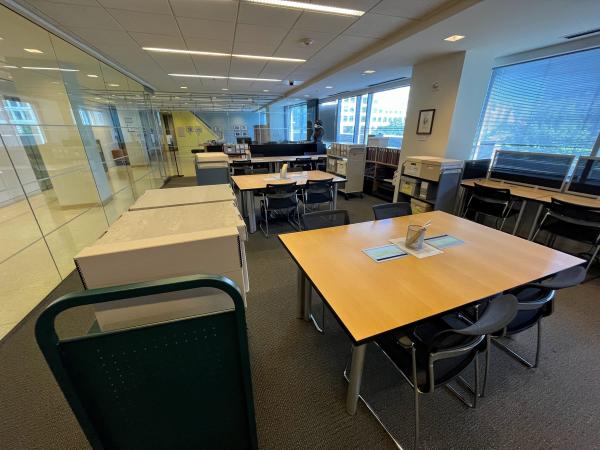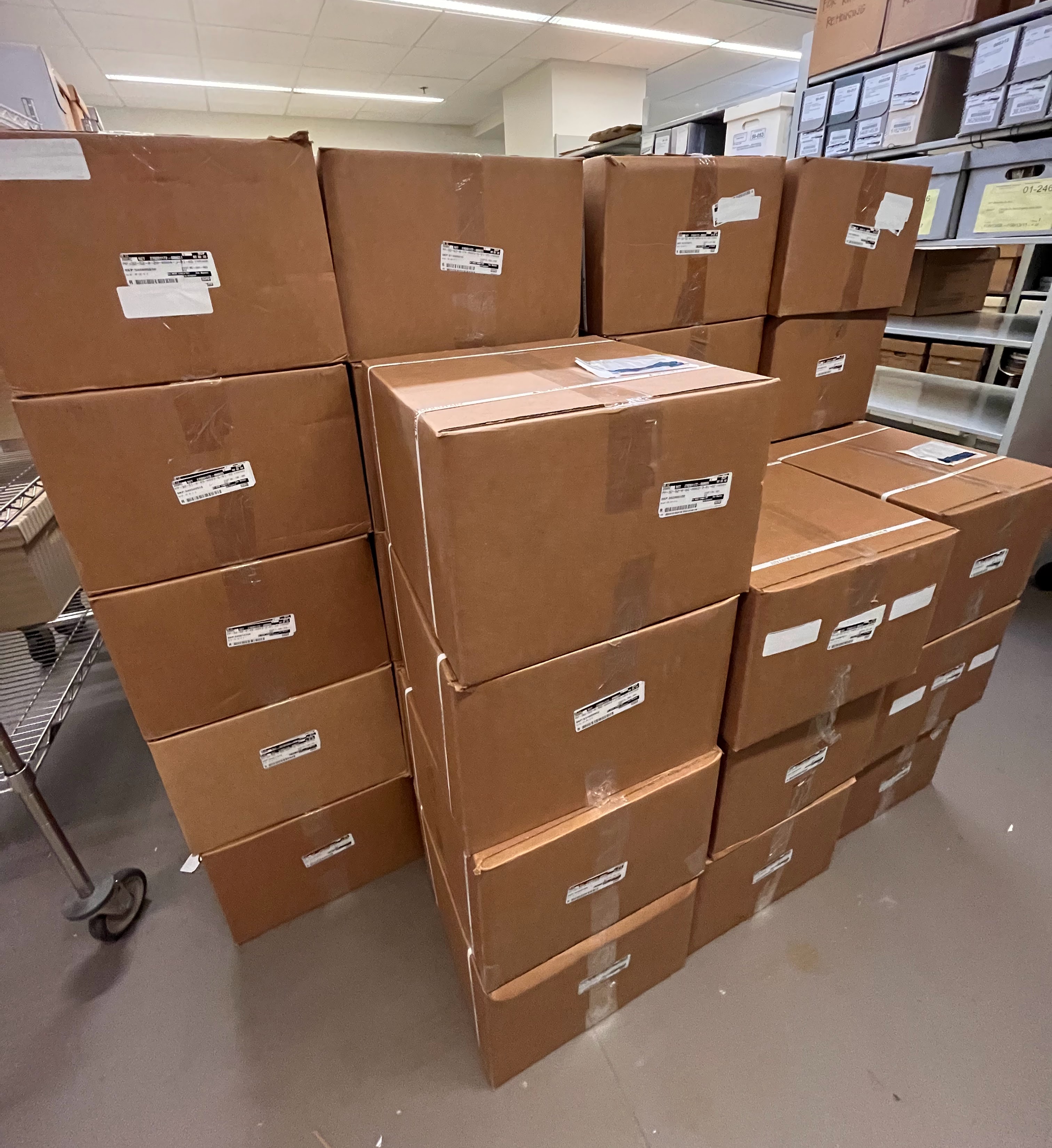In a very exciting piece of Smithsonian Institution Archives news, our reading room reopened to visitors on May 3, 2022!
With our physical facility closed due to COVID for over two years, the Archives reference team seized the unanticipated circumstance to undertake projects that could be addressed remotely and spent considerable time refining our policies and procedures. Two significant changes to public services are:
- Our hours. Our reading room is now open Tuesday–Thursday, 9:00 am–3:00 pm.
- We now require appointments! Contact us at OSIAREF@SI.EDU to visit the reading room and review collections.

It Takes Lots and Lots of Emails
While it was mentally difficult to close our reading room and physical collections, the support and understanding we received from researchers invigorated our spirits. We encouraged researchers to send their questions to our email account, and we continued to address inquiries to the best of our ability using digital resources, some of which we shared in an earlier blog post. With only a small fraction of our holdings available digitally, a backlog of inquiries began to mount, first by the item, then by the dozen, and then by the score; it did not take long for the backlog to exceed three hundred requests for visits or remote research.
It Takes Many Hours of Excel
In late March, we finally got the green light to start preparing for our reopening. After months (even years) of theoretical musings and diligent data entry, it was time to shift from planning to action. Our goal was to open at the beginning of May; we had four weeks to make it happen.
All of our plans formed around one key challenge: appointments.
In the past, researchers could visit on a walk-in basis. The reading room was perfectly sizeable, seating up to ten comfortably. Our only limiting factor was how many boxes could fit in our capacious collections staging area.
By 2022, however, the reference team was now confined to a strict weekly limit of 30 boxes from the offsite facility where most of our collections are stored. We also had a list of pending researchers covering several hundred Excel rows. Opening the floodgates would be disastrous.
So, for the first time, we instituted an appointment system. Sorting our Excel spreadsheet by initial contact date, we invited researchers to complete our scheduling questionnaire. Our email threads with each patron grew longer and longer as we compiled visitors’ preferences and finalized details. Which materials did they need to see? How many days would their research require? Could it wait until June, or did they have a pressing deadline?
It Takes Repurposing Old Tools
As the responses rolled in, we populated the Archives’ first-ever appointment schedule. Confirmation emails went out, and our first batches of boxes from remote storage arrived.
Now we needed a way to organize and track appointments. In lieu of introducing new software, we opted to streamline our emails and visits with a brand-new, shared Outlook calendar for the reading room. At a glance, we could see which patrons were expected each day, the collection materials they’d be consulting, and which staff members would be covering the front desk.

It Takes Cooperation
“Opening Day” arrived like the first day of school, or a similar significant event in which there is nervousness and tension, but also excitement and confidence, and plenty of pencils. Patron visits now required significantly more planning than in the past; we were operating with minimal staff, and had left no margin for error. There were three successful appointments on our first day, ten for our first week. We were off and running!
The success of a reading room can be difficult to measure or quantify, but we do have statistics. So, here they are, for the period May 3–June 30.
- Days Open: 27
- Patron Visits: 117
- Boxes Received from Remote Storage: 283
- Cubic Feet Circulated: 530
- Boxes Circulated: 844
It Takes Enthusiastic Researchers
While the numbers exceeded our expectations on every level, we care even more about fostering a welcoming and attentive environment. To this end, there has been only positive feedback and enthusiasm from the patrons, and invigorating camaraderie among visitors and staff seeking an increase and diffusion of knowledge.
We would like to thank our patrons for their patience and understanding while the reading room was closed. Some researchers may have been frustrated; however, we did not receive a single negative comment throughout the closure.

If you would like to visit our reading room, please submit an email to OSIAREF@SI.EDU. We are currently booked with appointments through the end of July, which makes us one of the hottest tickets in D.C. We suggest you contact us several weeks in advance of your desired visit. Hope to see you soon!
Produced by the Smithsonian Institution Archives. For copyright questions, please see the Terms of Use.



Leave a Comment